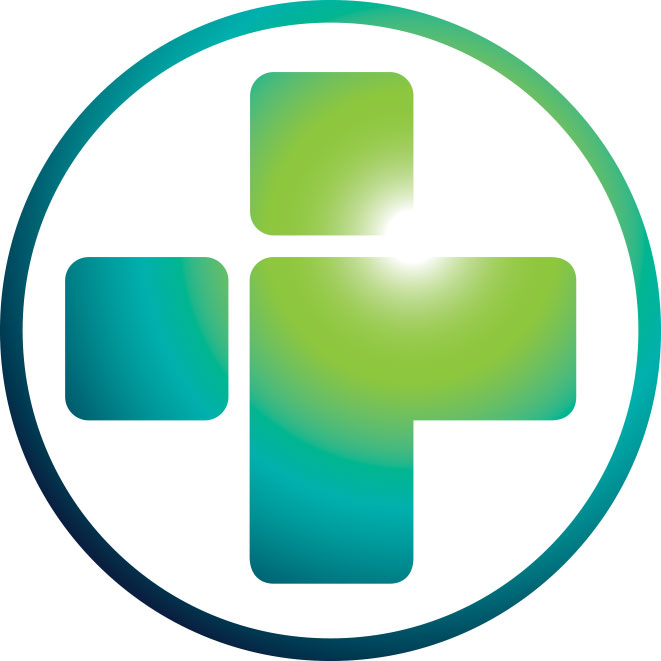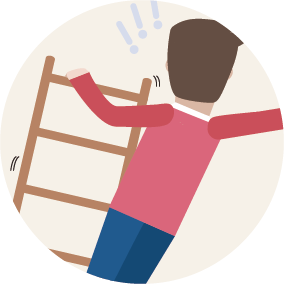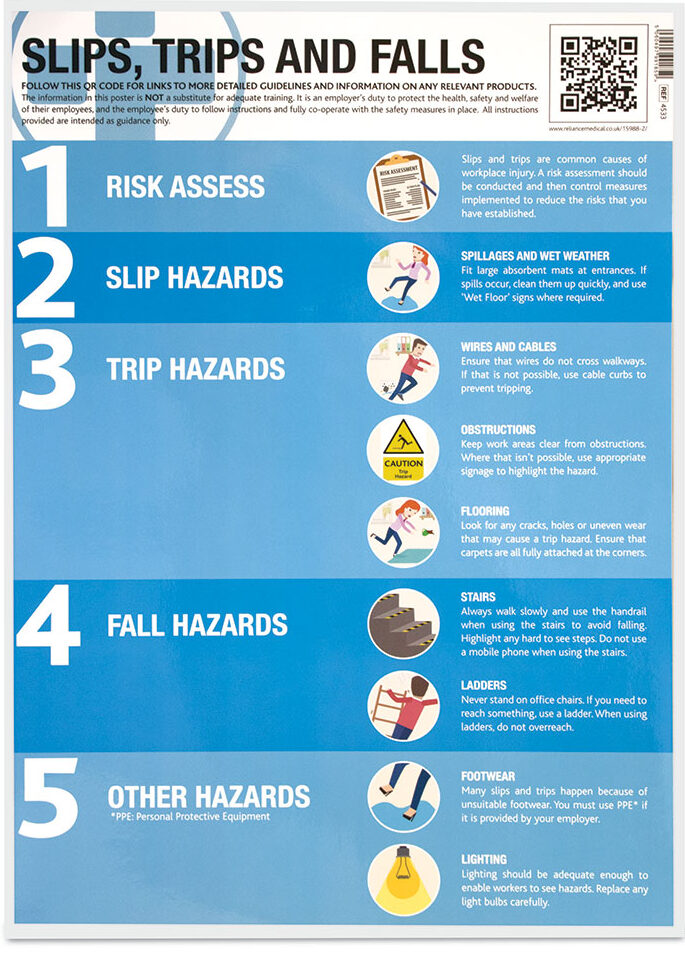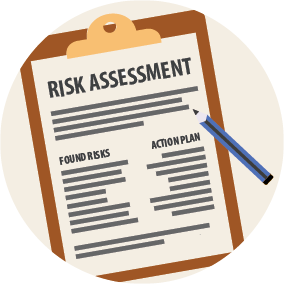
EMPLOYER’S RESPONSIBILITIES
Slips and trips are the most common cause of injury at work. On average, they cause 40 percent of all reported major injuries and can also lead to other types of serious accidents, for example, falls from height. Slips and trips are also the most reported injury by members of the public. The Health and Safety at Work Act 1974 requires employers to ensure (so far as is reasonably practicable), the health and safety of all employees and anyone who may be affected by their work. This includes taking steps to control slip and trip risks.
Step 1: Identify what can harm people in your workplace.
Step 2: Identify who might be harmed and how.
Step 3: Evaluate the risks and decide on the appropriate controls.
Step 4: Record your risk assessment and review the effectiveness of your precautions.
You should consult your staff during the risk assessment process. They will have useful information about how work is done which will help you understand the actual risks. In many instances, straightforward measures can readily control risks, for example, ensuring spillages are cleaned up promptly so people do not slip.

EMPLOYEE’S RESPONSIBILITIES
Employees can help with slip and trip risks in the workplace by:
• If you see any hazards that cannot be fixed by yourself (for example, a damaged floor), report it to your employer. It is especially important that you report any item or procedure which almost caused you to have an accident.
This information can be vital in preventing future incidents.
• Clear up any accidental spills that you cause quickly, to avoid your colleagues slipping on them.
• Help to keep your workplace tidy by ensuring that you clear up any mess you make, and ensure that you don’t leave any obstructions in walkways.
• If you notice any items that are trip hazards, arrange to move them to a location where they no longer present a hazard.
• If you have been given PPE, you must make sure that you wear it in all designated areas. Report any damaged PPE to your employer so they can make arrangements for a replacement.
Potential Fixes to Common Hazards
OUTDOOR AREAS
COMMON HAZARD
POTENTIAL FIX
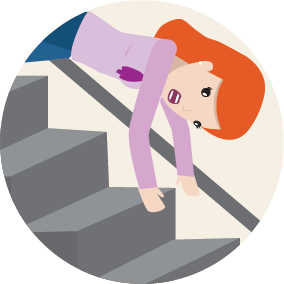
Can anything be found on the paths, steps, or fire escapes that could cause slips, e.g. build-up of leaves, wet grass, moss, mud etc.?
Set up a regular work schedule for clearing paths, tackling busy routes first.
Are paths prone to ice build-up during winter months?
Consider alternative, safer routes. Monitor weather conditions and put a winter procedure in place, e.g. gritting.
Are there holes, potholes, or uneven paving on footpaths?
Temporarily seal off the area and highlight the hazard as a temporary solution. Maintenance staff should fix the problem as soon as possible.
ENTRANCES
COMMON HAZARD
POTENTIAL FIX
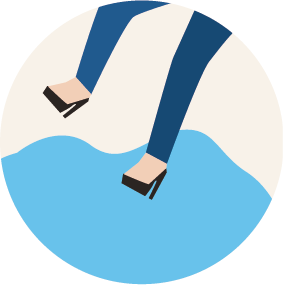
Is the floor where you enter the building slippery when wet?
Does water come inside when it rains?
Improve external drainage, keeping doors closed where possible.
Fit large, absorbent mats at entrances so people can dry their shoes.
Review cleaning systems to tackle any water that cannot be avoided.
INSIDE THE WORKPLACE
COMMON HAZARD
POTENTIAL FIX
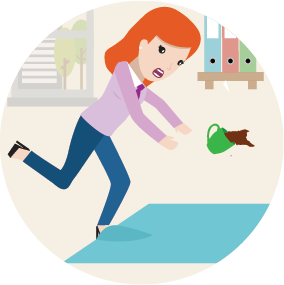
Are there any subtle changes in floor levels, e.g. slopes, small steps, abrupt changes from one flooring material to another?
Highlight the potential hazard by using eye-catching colour on any slopes, steps, or any differences in flooring materials.
Are the tiles or flooring becoming loose or curling at the edges?
Are there any holes?
Maintenance required: fix down tiles and carpet edges, replace if necessary, fill in holes and replace cracked tiles.
Are there any trip hazards around workstations or in corridors and walkways, e.g. trailing cables, boxes, deliveries, equipment, or other objects?
Keep walkways clear, tidy any wiring or use cable curbs, provide additional storage, and clear away boxes and equipment.
Are there sufficient light levels to see the floor surface clearly?
Improve lighting, fit new bulbs or additional lights.
As part of the work process, is contamination (fluids, solids, dust, debris etc.), getting onto the floor?
Stop contamination from getting onto floor, review working practice, improve work area layout, provide bins, dust extraction, lids on containers, reduce quantity of product in containers, fix leaking machinery etc.
Are designated walkways unusable or partially blocked?
Create a clear and even walkway through the workplace. Tidy away cables, provide additional storage, clear away clutter, boxes, and equipment.
Does any task stop people seeing slip or trip hazards, e.g. carrying items that restrict view, upset people’s balance, rushing?
Review and improve manual handling and moving procedures. Review work activity.
STAIRS AND RAMPS
COMMON HAZARD
POTENTIAL FIX
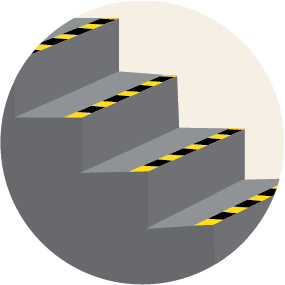
Do any steps have edges that are rounded, damaged or slippery, or are hard to see?
Check that lighting is sufficient for step edges to be seen clearly.
Highlight the very edge of the step with a non-slip high visibility strip.
Are handrails available?
Are they easy to reach and usable?
Provide a handrail on at least one side of the stairs; if flight of stairs is wider than 1m, provide handrails on both sides, and a third middle handrail if 2m or wider.
Is the height (rise), of the steps or depth of tread on the stairs inconsistent throughout the flight?
Highlight the problem, e.g. with a warning notice until the problem can be corrected to make them all equal in depth and height.
CLEANING
COMMON HAZARD
POTENTIAL FIX
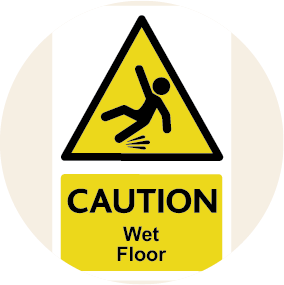
Are spillages left on the floor for some time before they are cleaned up?
Encourage a ‘see it, sort it’ mentality among staff. Ensure equipment for cleaning spills is readily available.
Can people continue walking through areas during wet mopping or while floors are still wet?
Keep people off smooth wet floors. Seal off or close hazardous areas. Wet mop out of hours when no-one is around.
Are areas of spills highlighted properly?
Use ‘Wet Floor’ signs after any spills or cleaning.
Are people slipping on the floor even though it has been cleaned and is dry?
Thorough cleaning to remove build-up of polish or grease etc. Review floor cleaning methods and amend accordingly.
All information based on the Health and Safety Executive’s, “Preventing Slips and Trip at Work” and “Hazard Spotting Checklist”
Slips, Trips and Falls Quiz
A short quiz to test your knowledge of Slips, Trips and Fall Hazards.

All information is for guidance only and correct at time of publication.

